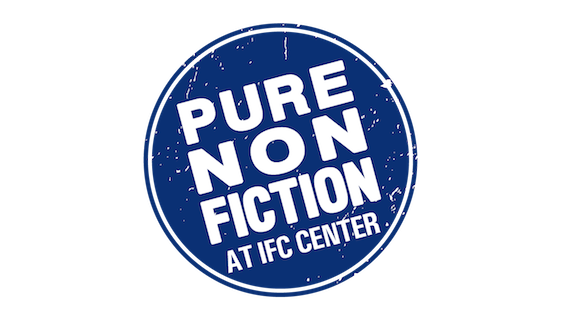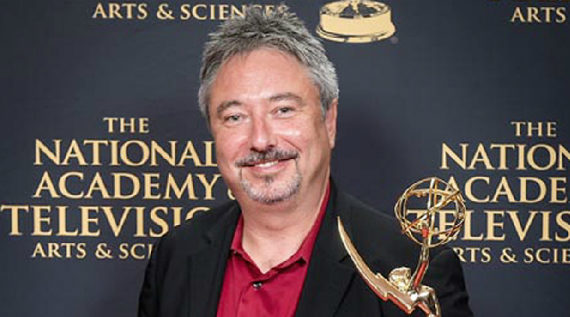Capturing the Friedmans, released ten years ago, has never stopped being debated. The film documents the case of Arnold and Jesse Friedman, father and son, who were convicted of sexually abusing students in their home. The film’s director Andrew Jarecki came away from his investigation convinced that Jesse, who spent 13 years in prison, was innocent. Jarecki has continued filming testimonies about the case and will publicly screen never-before-seen selections at the Toronto International Film Festival Doc Conference on September 10.
This summer, the Nassau County District Attorney Kathleen Rice, responding to questions stirred by Capturing the Friedmans, issued a new 155-page report that upholds Jesse Friedman’s conviction. Jarecki criticized the D.A.’s report in interviews with the New York Times and other media outlets. Last week, Jesse Friedman’s supporters backed up that criticism with their own findings detailed in the press release below.
For anyone interested in documentary storytelling, Capturing the Friedmans has a tremendous pull. At the time of its release, the extensive use of the Friedman’s home video was highly unusual, but a harbinger of a wave of documentaries drawing upon family archives ranging from Tarnation to 51 Birch Street. Jarecki has come under intense scrutiny for his editing decisions over what he included and excluded from a highly complex case in his film. The DVD contains extensive outtakes that make for compulsive viewing and feed those debates further.
In June, a few hours after Nassau County issued its report upholding Jesse Friedman’s conviction, a Long Island reporter called to ask my opinion. He wanted to know what I thought of Jarecki as a documentary maker turned advocate. Did I think the advocacy corrupted objectivity? The reporter sounded like he had his mind made up by the mass of the D.A.’s report and perhaps by its advisory panel member Barry Scheck. Given that Scheck, co-founder of the Innocence Project, is known as a crusader against wrongful convictions, doesn’t his tacit agreement with the D.A. report look bad for Jesse Friedman?
My answer then and now is: let’s wait and see. What I admire most about Capturing the Friedmans is the way the film teaches us to be skeptical about testimony. It plays upon our gullibility for taking the word of experts, law enforcement officials, journalists and eyewitnesses who later are revealed to be fallible, biased or corrupted with the best of intentions.
In recent years, we’ve seen a spate of documentaries on legal mistakes and malfeasance – the Paradise Lost trilogy, After Innocence, The Central Park Five – that demonstrate why we should remain wary of official verdicts. Documentary has an advantage over daily news with more time for reflection. But that doesn’t always solve the problems. Take the case of the Paradise Lost trilogy about a trio of murders in West Memphis, Arkansas. The first Paradise Lost, directed by Joe Berlinger and Bruce Sinofsky and broadcast on HBO in 1996, Viewers came away from Paradise Lost 2 in 2000 focusing on the odd behavior of John Mark Byers and concluding he was the real killer. By the time of Paradise Lost 3 in 2011, new DNA evidence cast suspicion away from Byers to Terry Hobbs who has never been charged.
advocacy got Ken Burns into conflict with NYC
I’m picking extreme examples of oscillating viewpoints.
Questions about the practice of doc making: what do you fit into a feature length film (The Act of Killing); how do you handle the bits you couldn’t fit?
FROM: Lonnie Soury, Soury Communications, Inc., (212) 414-5857, Lsoury@aol.com – For Immediate Release
LEADING AUTHORITIES ASSAIL D.A. REPORT ON FRIEDMAN CASE AS MISLEADING
FBI Expert Says Original Investigators “Misunderstood” Key Evidence and Used Coercive Techniques to Elicit Testimony from Children; Questions DA and Review Panel’s Expertise in “Mass Sex Abuse Cases”
National Center for Reason and Justice Says DA’s New Review of the Case Not Motivated by Desire to Find the Truth
(Mineola, NY- August 7, 2013) Kenneth Lanning, one of the country leading experts on the sexual victimization of children and a retired FBI Special Agent with the Behavioral Sciences Unit whose work was cited in the Nassau County DA’s recent Report on the Jesse Friedman case, today provided a sworn affidavit stating original investigators used coercive tactics to elicit testimony from children, and raised serious questions about the integrity of the Review by DA Kathleen Rice (see court filing).
The Review of the case was the result of an extraordinary 2010 decision of the U.S. Court of Appeals stating that there was a “reasonable likelihood Jesse Friedman was wrongfully convicted.”
Lanning stated, “Although it provides few details, the Report clearly indicates to varying degrees the [original] investigators in the Friedman case misunderstood behavioral inconsistencies, engaged in repetitive, suggestive and misleading questioning; provided rewards and incentives to alleged victims and indicated a bias toward validating victimization. The [DA’s new] Report suggests that this had little significant impact on the case. Without details of the interviews, however, it is impossible to evaluate this claim with any degree of certainty. The information in the Report provides minimal insight into the details of the original interviews.”
“Any attempt to review Jesse Friedman’s conviction should include competent and objective professionals documenting the disclosure process, evaluating potential contamination, and assessing interview procedures with access to and analysis of the most detailed and contemporaneous notes, reports, statements, records, transcripts, documentation, and evidence available.”
Joining the chorus of experts who are raising serious questions about the DA and the Advisory Panel’s decision, the National Center for Reason and Justice (NCRJ), an organization of lawyers and experts in mass sex abuse cases like Friedman, released a report stating, “The Nassau County, New York District Attorney’s Conviction Integrity Review of People v. Jesse Friedman (Report) is not an objective re-examination of the case. Instead it is, plain and simple, a prosecutor’s brief. District Attorney Kathleen Rice appears to be motivated not by a desire to find the truth but rather to re-convict Jesse Friedman and smear his image in the press.”
“The DA conducted the investigation in secret. The report selects negative evidence and innuendo about Friedman, while re-interpreting and dismissing all records and witness accounts that support his claim of innocence. Rice continues to withhold exculpatory evidence from the public, Mr. Friedman’s lawyers, and even from her own advisory board.” (court filing)
Attorneys for Jesse Friedman today filed a response to the District Attorney in a proceeding before Nassau Supreme Court Justice F. Dana Winslow. The filing seeks documents withheld by the DA, in order to accurately evaluate Friedman’s original conviction and the efficacy of DA Rice’s Report.
According to Friedman attorney Ron Kuby, “In the absence of any physical or medical evidence, the witness statements elicited by police were the only evidence in the case. For this reason, the contents of these statements, their evolution over time, and the interrogation methods used to elicit this testimony are of paramount importance.”
“The DA chose to ignore the statements of the many student eyewitnesses who sat alongside the alleged victims in the very same classes in which abuse was alleged, and who insisted no abuse ever took place. Ironically, the DA even dismissed the exculpatory account provided by one of her own Assistant District Attorneys, who coincidentally was himself a student in the Friedman computer classes. DA Rice arrogated to herself the exclusive right to make all credibility determinations, and consistently chose to accept without question the unsworn recollections of the police and prosecutorial officials while deeming incredible the former students and parents who came forward and contradicted the police accounts.”
The Lanning affidavit highlights the failures of the DA’s office, during the original Friedman investigation and again during the recent case review, to consult with an expert on cases known as “mass sex abuse” or “child sex rings” epitomized by the McMartin Pre-school case:
“….both the original investigation and the current Conviction Integrity Review should have included at least some input and guidance from experts with specialized knowledge and experience with this specific type of case. From the Report, I could see no indication that anyone involved, including the impressive Advisory Panel, had such specialized expertise.”
Though the DA cites the 2010 edition of a paper written by Lanning to support her argument against Friedman’s innocence, Lanning states in his affidavit that the reference was taken substantially out of context: “The concept in the Report…was accurately taken from one of my publications, but was used to imply as typical something that is not.”
According to Kuby, “Only the disclosure of the original statements and police reports will permit an accurate and truthful evaluation of Friedman’s guilt or innocence. The statements were created by the police. None of the alleged victims came forward with allegations outside of interviews with detectives. Every assertion in this case emerged from an interview, and was composed into statement form by detectives.”
DA Admits in Court that Advisory Panel Was Not Given All the Facts
In another recent court proceeding before Judge Winslow, DA Rice revealed that her office had selectively shared information with the Advisory Panel reviewing the investigation.
DA Rice’s review team overseeing the reinvestigation of Jesse Friedman’s conviction in the notorious case documented in the Academy Award-nominated film Capturing the Friedmans, withheld hundreds of pages of evidence from her own Advisory Panel consisting of the Innocence Project’s co-founder Barry Scheck and other prominent members appointed to oversee the investigation.
Assistant District Attorney Robert A. Schwartz shocked the court when he revealed that the Panel was given only certain documents and not others, based on the judgment of the DA’s review team. Friedman has learned that the Panel was not given any of the original police reports, witness statements, grand jury materials, or the DA’s files, even with the names redacted. ADA Schwartz stated in court, “With respect to your question of whether all the materials that were seen by the advisory panel, that was a subset of the records that were available and seen by the review team. The review team, being the executives in the district attorneys office that conducted the actual investigation. They, of course, had access to the entire Jesse Friedman file. The review team, which consisted of members of the district attorney’s office, had access and saw more documents than the advisory panel did.”
The DA has argued that releasing these documents even confidentially could be damaging if they reveal to Friedman’s defense the names of alleged victims, but she admits that Friedman has already possessed all of these names since they were provided to him in 1988.
Judge Questions the Selective Disclosure of Information
Winslow questioned the efficacy of the DA’s report, stating, “I think we’ve seen some differences of the information that was provided to the review team (DA) and the information that was provided to the advisory group, the four members of the advisory group. And that is why, if we are to consider the advisory panel of value, and their finding, then it’s necessary to know what it was that the advisory panel was looking at, and how they reached their conclusion.”
“This Court is faced with, as the district attorney has herself said, integrity, integrity of the process, the integrity of the process, as demonstrated by the investigation of the panel, as demonstrated by the advisory panel’s seeming agreement with the panel itself, with the review team itself. Those are the things that this Court is supposed to examine.”
Andrew Jarecki, filmmaker and activist, said, “D.A. Kathleen Rice and her office have hidden evidence, and they admitted so in court. ADA Schwartz revealed that the DA team handpicked which evidence it chose to share with the Advisory Panel. While we are are disappointed that Barry Scheck allowed his name to be used to rubber stamp a specious investigation by a hostile DA, we now know that much of the most important material showing Jesse Friedman’s innocence was withheld by the DA from the Advisory Panel. Jesse Friedman’s defense needs to know exactly what evidence the DA has, what evidence was withheld, and what evidence Barry Scheck was shown. In a 26 year old case that the U.S. Court of Appeals already stated was likely to have resulted in a wrongful conviction, what is the purpose of this secrecy?”
With over twenty-five direct witnesses to the Friedman computer classes coming forward and stating that no abuse took place in computer classes in the Friedman home — including many of the original complainants, and the full recantation of the government’s only adult witness, it is shocking that the DA and the Advisory Panel ignored all of this.”
Jesse Friedman’s defense team and prominent supporters have questioned why the Panel would sign off on a report that was clearly full of lies and innuendo, and did not effectively review significant new evidence presented to the District Attorney. It now appears the Advisory Panel did so without knowing even what material had been withheld.
Complainants and the State’s Only Adult Witness Provide Full Recantations
The District Attorney was given detailed evidence that five of the children, now adults, have recanted charges police attributed to them in 1988. Ross Goldstein, the teenage friend of Jesse Friedman who agreed after considerable coercion to falsely confess to crimes he did not commit and implicate Jesse, broke a 26 year silence, risking his anonymity to repudiate every charge he made against Jesse Friedman, first in a 9 page detailed recantation provided to the DA, and then in a three hour interview with the DA’s Review Team.
Goldstein stated: “I did not witness Jesse or anyone else commit any crimes in the Friedman home with any computer student. My testimony before the grand jury was a result of tremendous and unrelenting pressure and intimidation by the police and district attorneys’ office in which I was eventually coerced to lie about crimes taking place in order to try to save myself and be granted the YO [Youthful Offender] status deal that was being offered to me.”
“I was coached, rehearsed and directed by the prosecutor and Detective William Hatch for hours on end. I was told that it was my role to confirm what the complainants had said when they testified about had happened to them during the computer classes.”
DA Report Reveals “Unprofessional, Unfair and Cruel” Questioning of Children – Including Threats Non-cooperating Children Would Become “Homosexual” — But Says It Had No Impact on the Case
In their ruling on the Friedman case, the U.S. Court of Appeals concluded that detectives had applied tactics “designed to force children to agree with the detectives’ story.” Since witness statements elicited by police were the only evidence in the case, the Court added: “In this case, the quality of the evidence was extraordinarily suspect.”
The District Attorney’s report admits that police used suggestive questioning, and “unprofessional, unfair, and cruel” tactics on child witnesses, including threatening boys that they’d become “homosexual” if they didn’t say they were abused. The DA asserts that somehow this shocking misconduct had no impact on the investigation. The DA admits to “questionable practices” by a lead detective, and that police warned children they would “suffer lasting psychological consequences later in life if they do not disclose abuse.”
DA Kathleen Rice Leaks False Materials to Media About Jesse Friedman’s Prison Life
The DA’s report falsely states that Jesse Friedman “wrote” and “penned” vicious pornography while in prison and provides as proof a printout of a series of shocking pornographic stories. A standard Google search of any of the text attributed to Jesse Friedman reveals instantly that it is material available on the internet, written by and credited to someone else, whose email address appears at the bottom with an invitation to contact her. While Jesse Friedman was incarcerated at Coxsackie Correctional Facility (a maximum security prison), he had no access to the internet for downloading such stories, nor did he have an email address. Jesse Friedman did not “write,” “pen,” “possess,” nor “distribute” this material.
However, even after being informed of the inaccuracy of the DA’s damaging claim, shortly after the release of her Report, her public information officer John Byrne emailed a copy of the stories to the New York Post and other tabloids.
The release of these materials continues a pattern of misrepresentation by DA Kathleen Rice reflected throughout her investigation and report that exacerbates the damage done to Jesse’s life and reputation since his wrongful conviction 26 years ago. Jesse Friedman and his supporters continue their effort to reverse this injustice unbowed by these shameful efforts.
Those who may have important information on this case should call investigators at 516-660-4385.
# # #





